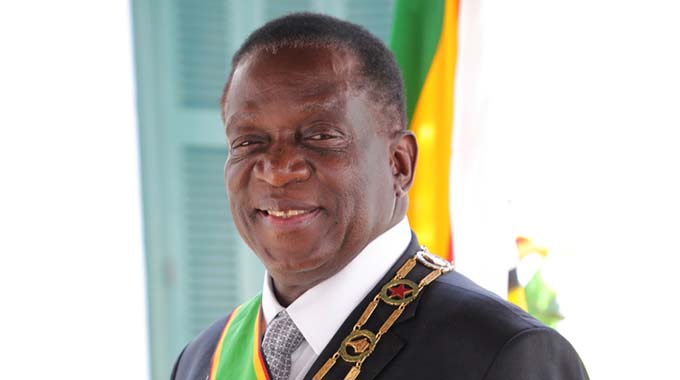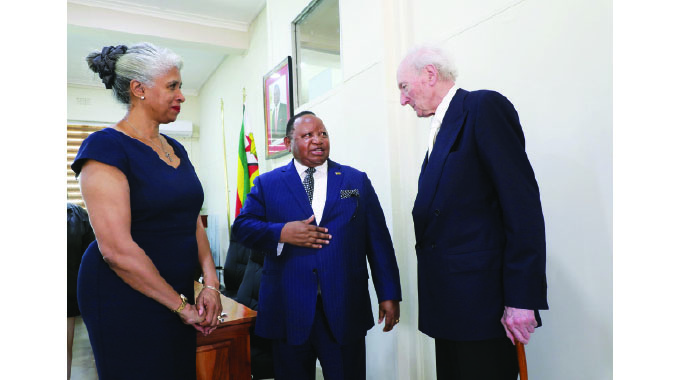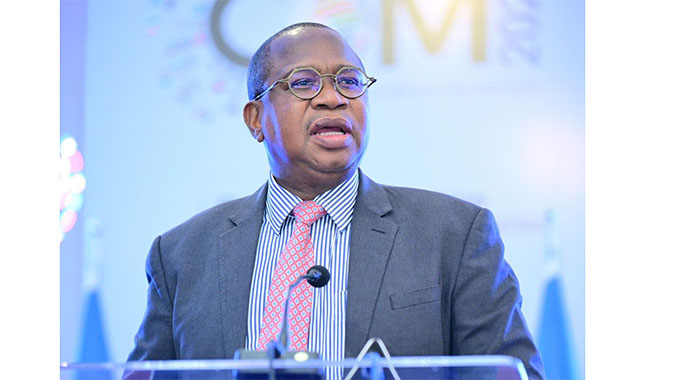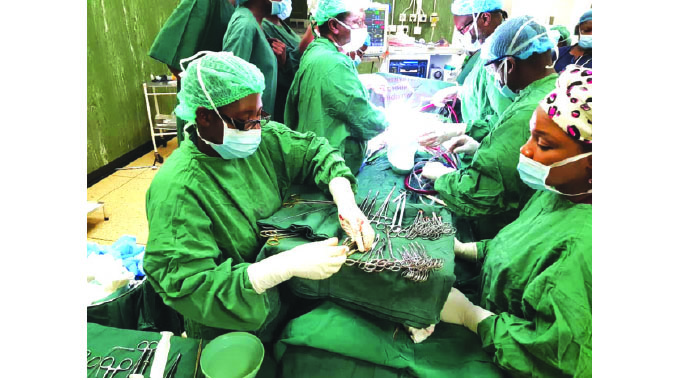From land-locked to land-linked economy

President Emmerson D. Mnangagwa
This week I share my thoughts on changing Zimbabwe from being a land-locked country into a land-linked economy.
This subject, among other things, addresses country and regional infrastructural assets and investments, principally in the transport and communications sub-sector.
Before I get into my subject for the week, an aside is appropriate to illustrate and reinforce my discussion last week on country risks.
The aside also provides some entry into this week’s subject.
Before me is a report titled “Building a New Zimbabwe: Targeted Policies for Growth and Job Creation”.
It comes from a year-long study by the African Development Bank. This reputable continental bank has supported us significantly, both by way of funds and by way of reform ideas.
“Building a New Zimbabwe” meticulously dissects our economy, sector by sector, to identify constraints, opportunities and options available and open to Government and investors alike.
Its observations and conclusions are well-grounded.
For instance, it notes that Zimbabwe “has investment opportunities requiring minimal additional investments to realise medium-term growth targets”.
That is a fact which many investors have acknowledged.
Further, it acknowledges the country’s “generous endowment of natural resources, existing stock of public infrastructure, and comparatively skilled labour force”, adding these provide Zimbabwe with “an unprecedented opportunity to join existing supply chains in Africa via the African Continental Free Trade Area”.
Again, that is a well-acknowledged fact.
I was part of the historic launch of the African Continental Free Trade Area in Rwanda in March early this year where the same strengths were noted.
The report concretely suggests a three-pronged recovery and growth strategy:
◆ Eco-tourism, which it says is a low-hanging fruit towards a green economy;
◆ Special economic zones, which it dubs a pillar of the whole recovery strategy; and
◆ Agriculture, which it says is “the foundation”.
On the strength of these three, and on the back of greater macro-economic stability, the report forecasts an annual growth rate of above four percent between 2019 and 2030.
This forecast is consistent with many others from reputable organisations.
On the question of financing the above three-pronged economic strategy, the AfDB suggests a model which is driven by trade aid and investment capital, as opposed to official development assistance, which it says is harder to come by anyway.
This recommendation falls within our investment (both domestic and FDI) and export promotion thrust.
Last week I met a group of investors from Belgium who came into the country to scout for opportunities. More are waiting in the wings.
I am also set to commission a big lithium project this week. Zimbabwe is on the move. The AfDB report treats investing in the development of infrastructure as a high priority, and suggests Zimbabwe needs to mobilise “patient capital” for that.
By “patient capital”, the report figuratively refers to long-term infrastructural investment with a maturity of 10 years or more, much of which has tended to come from countries like China and India.
Already, these two countries are our development and trading partners, and have been active in financing infrastructural projects here, including in the energy sector.
India has just committed itself to refurbish our Hwange Power Station to the tune of $310 million.
We need to move with speed to take up this offer which will augment our power supplies, thus limiting further our power import bill.
Yesterday I met officials from General Electric on the Batoka Gorge Hydro-Power Project, which we are set to implement jointly with the sister Republic of Zambia as an IPP.
Prior to this, I wrote to President Lungu proposing that a consortium of PowerChina and General Electric be contracted to work on the project which has been outstanding since 1972 when it was first proposed.
President Lungu graciously agreed.
This week the consortium is set to make a presentation to us here in Zimbabwe so the project can begin.
Once completed, the project will generate about 2 200 megawatts which will be shared equally between us and Zambia.
With other power projects either completed, underway or planned, Zimbabwe is set to be a power surplus nation.
This is what a judicious use of “patient capital” does for an economy.
Countries like Kazakhstan, Malaysia, Mexico, Morocco, Nigeria, the Philippines, Senegal, South Africa and Vietnam have used “patient capital”, which the AfDB recommends, to transform their economies.
Geography not a curse
Turning to my subject matter for the week, I personally do not believe that geography necessarily limits or condemns a country.
Geography cannot be a handicap, or be allowed to sum up a country’s destiny. Otherwise why would we talk of development?
What handicaps a country is the absence of, or under-investment in infrastructures, principally communication infrastructures by which a country connects to vital transit countries and to international markets.
Whether located away from or abutting the sea, a country can easily become “locked” or “linked” depending on the availability and quality of its infrastructures.
For me that is what is critical and what has challenged the archaic idea of “a land-locked” country, replacing it with the new and progressive idea of “a land-linked” country.
By communication infrastructures, I am referring to a country’s road, rail, air, pipeline, inland waterway and ICT assets.
I refer to how these are built and distributed spatially, and of course how they are run to interface and move goods efficiently, inside its economy, to sea for sea-borne trade, and to global markets.
This critical realisation has informed global development debate, leading to the United Nations Vienna Programme of Action for Landlocked Developing Countries for the Decade 2014-2024.
The Programme of Action addresses infrastructural development; trade facilitation; structural transformation of economies of so-called land-locked countries; and regional integration as a strategy of land-linking these economies to those of transit countries, and to global markets.
Geographically, Zimbabwe has no waterfront. But that need not condemn it.
Its economy can still be efficiently linked and integrated within the region, the continent and globally.
A few statistics from recent United Nations studies are revealing.
The UN says landlocked developing countries contain only 12 percent of the world’s paved roads, and just over one-third of the world’s railways.
These figures hide Africa’s low road and rail network.
With 9 000km of paved roads, Zimbabwe is relatively better than most African countries, excluding South Africa of course.
Still that is not good enough, and we need to do more both for business within and for regional, continental and global trade.
The UN also says the global share of landlocked developing countries in freight transport by air was 1,28 percent in 2016.
This year’s UN report notes that air transport is “particularly important because it provides those who live in landlocked developing countries with direct access to international markets without the need to pass through transit countries”.
It is this modest share in air freightage which prompted the African Union to launch the Single African Air Transport Market in January this year.
It remains to be seen what this decision will do to air transport business on the continent.
Zimbabwe is not doing too well on this front.
The impact of all this low connectivity of so-called landlocked developing countries on international trade and trade facilitation is direct.
The 32 landlocked developing countries identified by the UN, and which include Zimbabwe, account for less than one percent of global merchandise trade.
In fact, the 2018 UN figures show that these countries’ participation in international trade, measured as a share of their merchandise exports in global exports, reached a peak of 1,22 percent in 2012 and had since declined to an estimated 0,91 percent in 2017.
Becoming a land-bridge
What, then, needs to be done?
First, it is to appreciate, as I have already stated, that a land-locked country need not be a land-locked economy. That being cut from the sea need not mean we are cut from sea-borne trade, or from global markets.
Like Laos in Southeast Asia, Zimbabwe can become the land-bridge of Southern Africa.
For that we have a natural geographical advantage by virtue of being centrally situated. That makes us the gateway to and from the north. We border three countries with coastlines, namely Mozambique, South Africa and Namibia.
Equally, we border two countries which are landlocked like us, namely Zambia and Botswana. If we situate ourselves in Sadc, as indeed we should, we gain two more countries on the African mainland with coastlines, namely Tanzania and Angola.
We also gain four more which are landlocked, namely the DRC, Malawi, Lesotho and Swaziland.
Those with coastlines automatically become transit countries; those without coastlines, especially those to the north of us, become potential customers for a Zimbabwe whose economy and infrastructure plays sub-regional land-bridge.
Our goal should thus be to make Zimbabwe a sub-regional transport and communication hub.
In all modes of transport and communications: road, rail, pipeline, air and ICT. This means planning for an integrated regional transport link masterplan akin to one dubbed the Greater Mekong Subregion Communication Initiative in Southeast Asia which connects China, Vietnam, Cambodia, Myanmar and Thailand, with Laos as the hub.
I am happy that on the side-lines of the recent African Union Extraordinary Summit in Addis Ababa, Ethiopia, I conferred with President Masisi of Botswana on this possibility.
Building on a prior meeting between him and President Nyusi of Mozambique, Zimbabwe will soon host a ministerial meeting on how our three countries can cooperate towards investing in rail and pipeline links which will serve our countries and beyond.
Thereafter, another meeting involving Zimbabwe, South Africa and Mozambique will be convened to map out plans for a Southern Corridor.
Already, Zimbabwe is working on its dry port facility at Walvis Bay in Namibia.
The Kazungula Bridge, which is near completion now, incorporates us, with plans afoot to build a new border post on the Zimbabwean side to operate as a one-stop border post alongside posts on the Zambian and Botswana sides.
The work is cut out for us.
We must be linked to transit countries with efficient rail, road and pipeline systems. I am happy that Zimbabwe and Mozambique have now agreed to build a second pipeline linking Beira to Msasa. Botswana and Zimbabwe will work on its extension to reach that country.
Building modern infrastructure
On air transport, Zimbabwe must speedily liberalise its airspace in line with decisions of the AU and Comesa.
This could run concurrent with our efforts at reviving Air Zimbabwe.
The Chinese loan targeting the Robert Mugabe International Airport will restore our competitiveness in air transport business.
Already, our investments at Victoria Falls Airport have borne fruit.
I am happy that work on the Beitbridge-Chirundu Highway is finally beginning.
We must build our own capacity to lay modern transport infrastructure.
Above all, we must always bear in mind all these infrastructures are “economies” for which returns must follow.
More work needs to be done on our rail network which is slowing down rail traffic, and causing frequent derailments.
Current rail speeds of 30-50km per hour cannot make us an efficient economy, let alone a preferred transport hub for the region.
Equally, NRZ workshops must be re-equipped so we are able to service the moving parts of the whole network.
Related to all this is the fundamental question of harmonising transit policies in our region. This is both a legal and infrastructural issue.
We must harmonise, simplify and standardise rules and documentation as goods move between our borders.
The creation of one-stop border posts goes a long way in that regard. This is why Beitbridge is being revamped, and why we have reached an agreement with South Africa to work as one on this border post — the busiest on the African continent.
We need similar arrangements with all our neighbours if we are to become a real regional hub.
As we heard at the latest Sadc Summit held in Windhoek, Namibia, there cannot be real, serious trade if there is no manufacturing.
Zimbabwe must continue to build her productive and industrial capacity through value addition. I have dealt with this subject before.
Limited manufacturing and industrial capacity stands in the way of our effective integration into regional and global value chains.
This is a key structural transformation we need in the economy.
It is a transformation which must cover areas of need within our region and beyond.
The transport corridors must become economic corridors as well. That way our exports will grow exponentially.
The $60 billion which China availed to Africa at the recent Focac Summit must be exploited towards this vision of making Zimbabwe a land-bridge of the region.
After all, this is the “patient capital” which the African Development Bank speaks about.







Comments